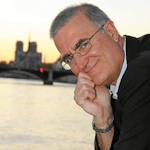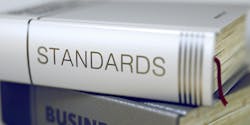Q: “What psi is used for drying instruments in the decontamination area of Sterile Processing?”
A:
“Instrument air” is used in the decontamination area to “blow out” debris and in the prep and packaging area to help dry lumened devices and wet sets. Items should be dried for steam and low-temperature sterilization methods, unless otherwise directed by the sterilizer manufacturer/medical device manufacturer’s instructions for use (IFU).
The Association for the Advancement of Medical Instrumentation (AAMI) introduced the term “instrument air” in standard ST79:2017. This air should be used to dry instruments. “Using methods other than instrument air for drying can adversely affect the device or contaminate it.”1
If the device (e.g., semi-rigid endoscope) manufacturer recommends drying, refer to the IFU to see if there is specific pressure to prevent damaging the device.
I recommend installing a pressure gauge on the hose to monitor the pressure of the air or water. I also recommend having a set of adapters to fit various sizes of lumens. Therefore, instrument air should be available to blow out and dry lumens and any residual moisture on sets or individual medical devices.
AAMI does not give any psi setting, so technicians must read their IFU and use the settings the device manufacturers give. That is why I recommend a gauge to monitor for proper pressure.
Sterile Processing Professionals (SPP) should remember (whether psi is given for air or water pressure) they need to use critical thinking to find safe pressure to clean/dry that specific medical device with the proper cleaning devices (i.e., air/water pistol/gun). Some IFU might state to use a syringe to dry or irrigate for cleaning.
Examples of various manufacturers’ IFU details:
- No pressure advice. Just use a water gun: “Use a soft towel, a plastic brush, or a water gun for cleaning.”2
- Pressure minimum: “For cleaning: Cold water [50–77 ℉ (10–25 ℃), potable or better as defined in TIR34:2007] pressurized at a minimum of 30 psi [pressure gauge and regulator recommended].”3
- Use a dry cloth and pressurized air but no psi given: “Instruments must be thoroughly dried with a clean, soft cloth. The use of pressurized air is recommended to aid in drying, especially in the crevices of the instrument. Residual moisture may contain waterborne pathogens and must be removed prior to sterilization. Additionally, any remaining moisture, especially in the internal areas, may result in corrosion that can cause the instrument to bind up and shorten the life of the instrument.”4
- Very specific pressure requirements: “When aerating or irrigating the endoscope channels, the air or water pressure must not exceed 0.5 MPa (5 kgf/cm2, 71 psig). Higher pressures may cause damage to the endoscope.”5
- Options on what to use: “Rinse device using DI or PURW. Use a syringe, pipette, or water pistol to flush lumens, channels, and other hard-to-reach areas. Actuate joints, handles, and other movable device features in order to rinse thoroughly under running water.”6
Because SPP work in a dynamic environment, the IFU are always in what I call a “flux mode—ever changing.” Make sure you are using the most up-to-date version of the IFU for your medical devices (when understanding what pressures to use for air or water).
I also recommend each department have a policy in place and document how they have arrived at setting pressure on devices when the manufacturers give vague guidance on what pressure to use. Also, if an IFU states use of a syringe and you substitute the use of something else, you need to provide sound reasoning for this divergence.
Lastly, staff need proper training for safety precautions in using pressurized air/water gun/pistols within the department. This could even be a “core competency” staff must review yearly.
Here is an earlier HPN article I wrote titled “Instrument Air and A° Validation"7 that may be helpful with more background.
References (APA Style 7th Edition):
-
AAMI (2017). ANSI/AAMI ST79:2017 Comprehensive guide to steam sterilization and sterility assurance in health care facilities. Arlington, VA: Association for the Advancement of Medical Instrumentation.
-
Mizuho Corporation. (2020, October 23). MES-CK09-259-01EN-0 Instructions for Use: Bulldog clamp, Version 2. (p. 1). https://www.mizuho.co.jp/ifu/wp-content/uploads/ifu/CK09-259-01EN-0.pdf
-
Intuitive Surgical, Inc. (2016, March). PN 1004943-US da Vinci Xi® Surgical System Readiness Guide, Rev. G 03/16. (p. 6). http://mplusmedtech.com/16001/pdf/11687.pdf
-
Medline® Industries, Inc. (2015). Rongeurs – Recommended Cleaning, Sterilization, and Instructions for Use. (pp. 1–2). https://www.medline.com/media/mkt/pdf/Rongeurs-IFU.pdf
-
OLYMPUS® MEDICAL SYSTEMS CORP. (2015). RC2409 02 INSTRUCTIONS EVIS EXERA II DUODENOVIDEOSCOPE OLYMPUS® TJF TYPE Q180V. (p. 8). https://medical.olympusamerica.com/sites/default/files/pdf/TJF-Q180V_ReprocessingManual.pdf
-
Synthes® GmbH, Inc. (2010, February). SE_023827 AE 10100107 Important information (with cleaning and sterilization instructions). (p. 7). https://docplayer.se/10459044-Important-information-viktig-information-with-cleaning-and-sterilization-instructions-med-rengorings-och-steriliseringsinstruktioner.html#google_vignette
-
Kovach, Stephen M. (2022, July 22). Instrument Air and A° Validation. Healthcare Purchasing News. https://www.hpnonline.com/sterile-processing/article/21274473/instrument-air-and-ao-validation

Stephen M. Kovach
Stephen M Kovach, BS, CFER, started in the medical field in 1975 as a sterilization orderly and has worked in many positions within the Healthcare Industry. He presently is Clinical Educator Emeritus at Healthmark, A Getinge company.





